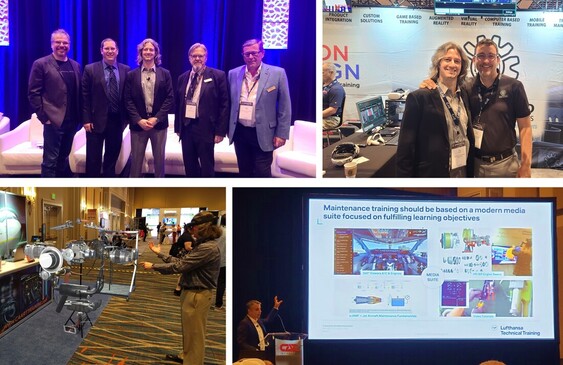 Julian Abich, Ph.D., Senior Human Factors Engineer Julian Abich, Ph.D., Senior Human Factors Engineer An estimated 602,000 new pilots, 610,000 maintenance technicians, and 899,000 cabin crew will be needed worldwide for commercial air travel over the next 20 years (Boeing, 2022). That’s about 30,000 pilots, 30,000 maintenance technicians, and 45,000 cabin crew trained annually. Additionally, urban air mobility is creating a new aviation industry that will require a different type of pilot and technician. It's clear there is a demand across the entire aviation industry to turn out new personnel at an increased rate. The demand should not just be met by numbers, but also by knowledge and experience. But how can you train faster, cheaper, and yet still maintain (and exceed) current high standards? Is the answer extended reality (XR) technology? (Hint: that's part of the solution). These are the problems being tackled by the aviation community and discussed at the World Aviation Training Summit (WATS). This year was the 25th anniversary of WATS. I've been attending and presenting at WATS for the past three years. In that time, I've seen the push for XR technology met with valid concerns for safety. If you know me, then you've heard me harp on the need for evidence-supported technology for training, so I can appreciate that stance. Technology developers have an ethical responsibility to conduct or commission the appropriate research before boasting claims of training effectiveness, efficiency, and satisfaction. There are many companies that came to the table with case studies showing the training value of their solution. Other companies want to do the same but may need more opportunities or research support. On the other side, some commercial airlines have been conducting XR studies internally, but the results tend to stay within the organization. The regulating authorities (e.g., FAA, ICAO, etc.) need the most convincing. They need to see the evidence and clearly understand where XR will be implemented during training. There may be an assumption that XR is the training solution but XR is just part of a well-designed, technology-enabled training strategy. It was great to hear many presenters convey this same message and reiterate the need for utilizing a suite of media suitable for developing or enhancing the necessary knowledge, skills, and abilities. We need collaboration between researchers, tech companies, and airlines, sharing research results to show the value of XR at all levels within the aviation industry. Otherwise, the work will continue to be done in silos, efforts will be duplicated, progress will be stunted, and personnel demands will fail to be met. We all need to contribute to the scientific body of knowledge if we want to move the industry in the direction needed to adapt and prosper.
Reference: Boeing. (2022, July 25). Boeing forecasts demand for 2.1 million new commercial aviation personnel and enhanced training. https://services.boeing.com/news/2022-boeing-pilot-technician-outlook
0 Comments
Your comment will be posted after it is approved.
Leave a Reply. |
AuthorsThese posts are written or shared by QIC team members. We find this stuff interesting, exciting, and totally awesome! We hope you do too! Categories
All
Archives
June 2024
|


 RSS Feed
RSS Feed